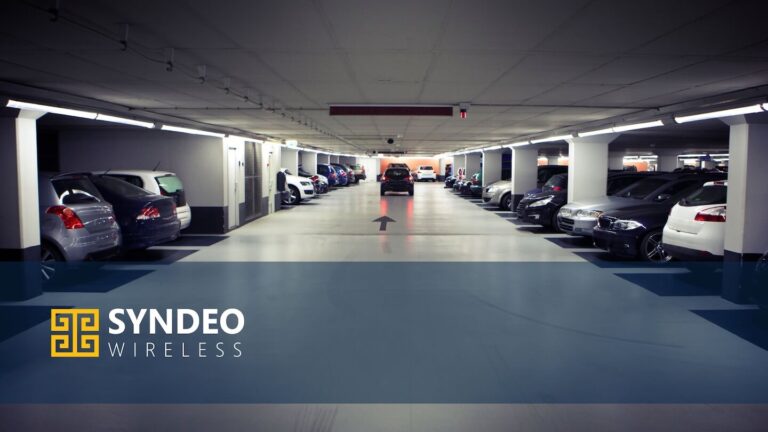Why developers are rethinking parking structures as digital infrastructure—and how cellular DAS for parking garages is becoming essential.
Pull into most modern office buildings, multifamily properties, or mixed-use developments and you’ll likely pass through a sleek, well-lit parking garage. But while today’s garages may be clean, secure, and outfitted with EV chargers, they often lack one thing that residents, visitors, and staff expect as a given: cellular service.
Concrete, steel, and subterranean construction work wonders for structural integrity—but they also block cellular signals. And in an increasingly mobile-first world, that’s a serious problem.
Whether someone is trying to open a mobile parking app, pay for EV charging, call for assistance, or use emergency services, no signal in a parking garage isn’t just an inconvenience—it’s a connectivity failure. It’s also becoming a compliance issue in many jurisdictions where public safety systems are mandated to function across all areas of a property, including garages.
The good news? There’s a reliable and scalable solution, and developers across the U.S. are taking notice: Cellular DAS, or Distributed Antenna Systems.
Dead Zones at Street Level – and Below
It’s not hard to understand why garages are among the most common “dead zones” on a property. Designed with durability, security, and cost-efficiency in mind, these structures are typically built using dense concrete walls and floors, metal rebar, and low ceilings—all of which inhibit wireless signals from reaching or traveling effectively.
Go a few levels below ground, and it becomes nearly impossible to place a phone call or authenticate an EV charger through a mobile app. And with the widespread adoption of license plate recognition (LPR) systems, app-based entry/exit, and IoT-enabled parking sensors, the pressure on wireless infrastructure is growing fast.
What Is Cellular DAS and Why Does It Matter?
Distributed Antenna Systems (DAS) are precisely engineered networks of small antennas that distribute cellular signals throughout a space that would otherwise suffer from poor reception. DAS typically connects to a carrier signal source—either from an on-site base station or through a repeater—and rebroadcasts that signal using internal antennas.
In parking garages, DAS ensures that every level, every corner, and every key access point receives strong, consistent cellular coverage. Unlike Wi-Fi, which may be limited in range or subject to congestion, cellular DAS provides a dedicated, multi-carrier solution—supporting AT&T, Verizon, T-Mobile, and others simultaneously.
For parking structures, this enables:
- Real-time communication with EV chargers
- Reliable performance for app-based entry or mobile parking payments
- Full functionality for LPR cameras and gate automation
- Critical connectivity for public safety and 911 services
Safety Is Driving Compliance – and Investment
One of the most overlooked aspects of wireless coverage in garages is its impact on emergency response systems. In many municipalities, local fire codes and building regulations now require that ERRCS (Emergency Responder Radio Communication Systems) be installed in parking facilities. These systems often leverage DAS infrastructure or require close coordination with it.
Failing to meet ERRCS requirements can delay Certificate of Occupancy approvals and expose owners to liability if an incident occurs in an area without compliant radio coverage.
For developers and property managers, this means that Cellular DAS isn’t just about convenience anymore—it’s about code compliance and life safety.
Enabling Smart Parking and Mobility Infrastructure
Connectivity is also the backbone of smart parking systems, which are increasingly becoming standard in Class A properties and urban developments. These systems include:
- Real-time occupancy sensors
- EV charger authentication and usage monitoring
- Digital signage for space availability
- Mobile app reservations and payments
- Access control integration with license plate or RFID scanning
All of these systems rely on consistent uplinks and low-latency communication, much of which is now offloaded to cellular networks. As more devices shift to LTE and 5G for bandwidth and speed, the need for cellular signal in the garage becomes a foundational element—not an afterthought.
A Strategic Upgrade, Not a Retrofit Headache
Smart developers are now approaching parking garage connectivity as a core design feature, integrating DAS early in the development process. This avoids the higher costs and logistical challenges of retrofitting systems after the building is operational.
The result? A parking structure that:
- Supports seamless tenant and guest experiences
- Increases property value and lease appeal
- Complies with public safety codes
- Future-proofs mobility infrastructure
With DAS systems now available in turnkey, managed service models, property teams can deploy coverage with no CapEx and predictable monthly costs—making it easier to scale across large portfolios or mixed-use environments.
The Bottom Line about Solving Connectivity Challenges in Parking Garages with Cellular DAS
Parking garages are no longer just spaces to store vehicles—they are mission-critical parts of a property’s digital experience. From mobile ticketing and EV charging to public safety and smart mobility systems, reliable cellular connectivity has become a baseline expectation.
For developers and property managers looking to deliver next-generation building infrastructure, Syndeo Wireless Cellular DAS in parking structures is a smart, strategic investment—one that keeps people connected when and where it matters most.




